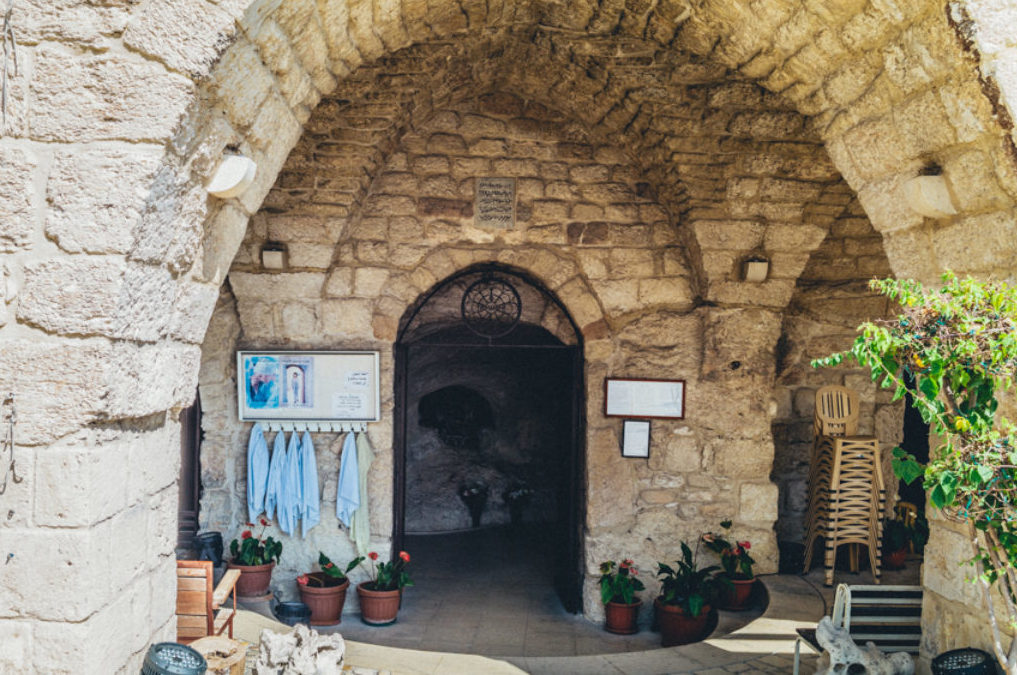Full-Day Group & VIP Tour
Jeita – Harissa – Byblos
The tour starts with visiting Jeita which is a dry cave, 56 meters deep to the east of the source cave from where the river flows and connected to it by narrow channels, then continues with The Statue of Our Lady of Lebanon which is a French-made, 13-ton statue, made of bronze and painted white, of the Virgin Mary and ends with The coastal town of Byblos which is located on a cliff of sandstone 40 km North of Beirut. Continuously inhabited since Neolithic times, Byblos bears outstanding witness to the beginnings of the Phoenician civilization.



Baalbeck – Anjar – Ksara
Visit the Queen of Heaven in Phoenician religion (the name ‘Baalbek’ means Lord Baal of the Beqaa Valley). Inhabited as early as 9000 BCE, Baalbek grew into an important pilgrimage site in the ancient world for the worship of the sky-god Baal and his consort Astarte followed by Anjar which was founded by Caliph Walid I at the beginning of the 8th century and located in the Beqaa Valley and ends with Chateau Ksara (Ksara) which is a winery that was established in 1857 by French Jesuit monks in the ancient city of Beqaa, thirty kilometers east of Beirut, Lebanon. The monks planted vines and produced wine that they famously labeled Clos St. Alphonse and used during religious services.



Sidon – Tyre – Maghdouche
Our tour starts with visiting Sidon which was inhabited as long ago as 4000 B.C., and perhaps as early as Neolithic times (6000 – 4000 B.C.) continues with the antique town of Tyre which was the great Phoenician city that reigned over the seas and founded prosperous colonies such as Cadiz and Carthage and according to legend, was the place of the discovery of purple pigment, then we visit Our Lady of Mantara which is a Melkite Greek Catholic Marian shrine in Maghdouche, Lebanon. Maghdouche housed the cave where Virgin Mary await- ed Jesus Christ while he was preaching in Sidon. During the Phoenician conquest, the cave was a temple for Astarte, a goddess. This temple was transformed into a sanctuary for virgin Marry during the Hellenistic Age by the emperor Constantine.



Beiteddine – Deir Elqamar
Don’t miss the visit to Beiteddine Palace which is a 19th-century palace in Lebanon. It hosts the annual Beiteddine Festival and the Beiteddine Palace Museum and then to the first village in Lebanon “Deir El Qamar” that have a municipality in 1864, and it is the birthplace of many well-known personalities, such as artists, writers, and politicians. It was the winter capital of the Druze Cancimat of Lebanon (1840-1860), the summer capital being Baakleen.


Tripoli – Batroun
Start your tour by discovering Tripoli which was founded after 700 bc, it became in the Persian period (300 bc) the capital for the Phoenician triple federation of city-states—Sidon, Tyre, and Arvad (Aradus). Later, Tripoli was controlled by the Seleucids, then by the Romans, and, from about ad 638, by the Muslims. In the end, you need to visit Batroun which is a major tourist destination in North Lebanon. The town boasts historic Roman Catholic and Greek Orthodox churches. The town is also a major beach resort with a vibrant nightlife that includes pubs and nightclubs.


Qozhaya – Qadisha – Cedars
“One can definitely see the Gods in the Cedar tree’s eternal lifespan”.
The trees are first mentioned in the Epic of Gilgamesh; The Cedars of God are mentioned as a divine, shady forest fought over by the demi-gods and the humans. It is said that the expanse was once protected by Mesopotamian Gods and that Gilgamesh himself used cedar wood to build his great city.
The Monastery of Saint Anthony the Great (Mar Antonios al-Kabir) is situated at a height of 950 meters above sea level in the celebrated Valley of Qozhaya, ” the Living Treasure “, in the Zghorta district of North Lebanon. It belongs to the Lebanese Maronite Order known as Baladites.
The Ouadi Qadisha (the Holy Valley) and the Forest of the Cedars of God is a cultural landscape encompassing one of the most important early Christian monastic settlements in the world. The valley has been a place of meditation and refuge since the earliest years of Christianity.



Notice
Lunch, Entrance fees and Tax are inclusive.
Discount for children below 12 years.
Free Pick-Ups and Drop-Offs from all destinations.
We are not responsible for lost or stolen items.
Including transportation in deluxe vehicles.
Prices are subject to change.

